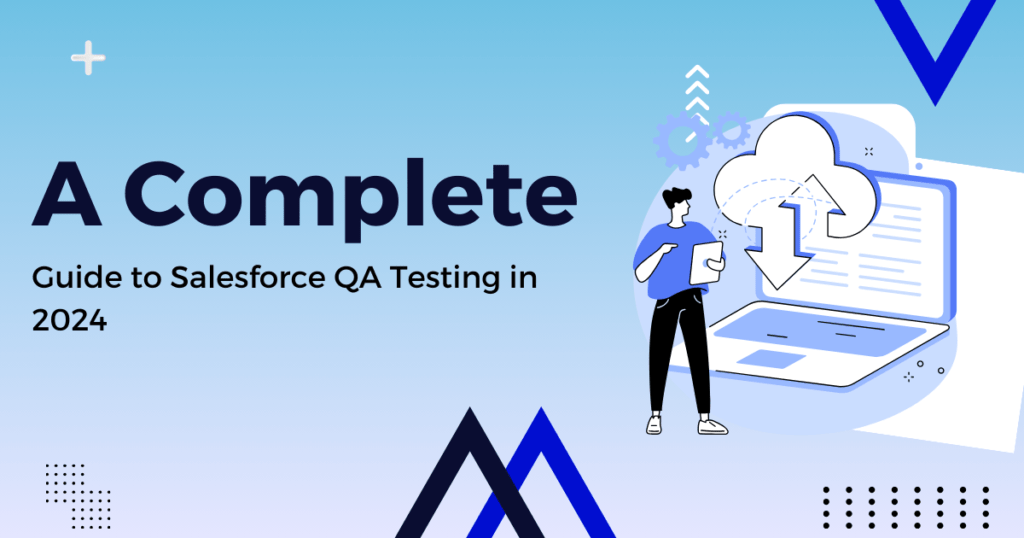Salesforce has become a cornerstone for businesses worldwide, offering robust customer relationship management (CRM) solutions. As companies increasingly rely on Salesforce for their operations, ensuring these applications are error-free and efficient is more critical than ever. Quality assurance (QA) testing plays a pivotal role in achieving this.
Here’s a comprehensive guide to Salesforce QA testing in 2024, covering best practices, essential tools, and effective strategies.
Why Salesforce QA Testing is Important
Salesforce QA testing is crucial for several reasons:
- Data Integrity: Ensures the accuracy and consistency of data.
- User Experience: Enhances user satisfaction by delivering a seamless experience.
- Compliance: Ensures compliance with industry regulations and standards.
- Performance: Guarantees optimal performance under various conditions.
Types of Salesforce Testing
- Functional Testing
- Verifies that all functionalities of the Salesforce application work as intended.
- Includes testing of Salesforce workflows, validation rules, and custom objects.
- Regression Testing
- Ensures that new code changes do not adversely affect existing functionalities.
- Critical for maintaining stability after updates or customizations.
- Performance Testing
- Evaluates the application’s performance under different loads.
- Identifies bottlenecks and ensures the application can handle peak usage.
- Security Testing
- Ensures that the Salesforce application is secure from vulnerabilities and unauthorized access.
- Involves testing for issues like data breaches, security misconfigurations, and access control.
- User Acceptance Testing (UAT)
- Validates that the application meets the end users’ requirements and expectations.
- Involves real users testing the application in a production-like environment.
Best Practices for Salesforce QA Testing
- Early Involvement
- Involve QA teams early in the development lifecycle to identify potential issues sooner.
- Collaborate closely with developers and stakeholders to understand requirements thoroughly.
- Use Realistic Test Data
- Use data that closely resembles actual user data to uncover real-world issues.
- Regularly update and sanitize test data to maintain data integrity.
- Automate Where Possible
- Implement test automation for repetitive and regression test cases to save time and reduce errors.
- Use automation tools that integrate seamlessly with Salesforce, such as Selenium, Provar, and Testim.
- Focus on Security
- Conduct regular security audits and vulnerability assessments.
- Ensure compliance with security standards and best practices.
- Continuous Integration and Continuous Testing
- Integrate testing into the CI/CD pipeline to ensure continuous testing and rapid feedback.
- Use tools like Jenkins, CircleCI, and GitLab CI for seamless integration.
Ready to enhance your software quality and accelerate your time to market? Contact us today at sales@stelotechnology.com to request a customized quote for your business!
Essential Tools for Salesforce QA Testing
- Selenium
- An open-source tool for automating web applications.
- Widely used for functional and regression testing of Salesforce applications.
- Provar
- A specialized testing tool for Salesforce that offers comprehensive test automation solutions.
- Provides robust integration with Salesforce and supports end-to-end testing.
- Testim
- AI-powered test automation tool that accelerates the creation and maintenance of tests.
- Ideal for dynamic and complex Salesforce applications.
- Jenkins
- An open-source automation server for continuous integration and continuous delivery.
- Integrates with various testing tools to automate the testing process.
- Postman
- A popular tool for API testing.
- Useful for testing Salesforce APIs to ensure they function correctly and efficiently.
Strategies for Effective Salesforce QA Testing
- Define Clear Test Objectives
- Establish clear goals and objectives for what each testing phase should achieve.
- Align test objectives with business requirements and user expectations.
- Develop a Comprehensive Test Plan
- Create a detailed test plan that includes test cases, test scripts, and expected outcomes.
- Regularly review and update the test plan to reflect changes in requirements and functionalities.
- Leverage Sandbox Environments
- Use Salesforce sandbox environments to test changes in isolation from the production environment.
- Regularly refresh sandboxes to ensure they reflect the current state of the production environment.
- Prioritize Test Cases
- Prioritize test cases based on their impact on critical functionalities and user experience.
- Focus on high-risk areas and core functionalities first.
- Conduct Regular Audits and Reviews
- Perform regular audits of the testing process to identify areas for improvement.
- Conduct code reviews and test script reviews to ensure quality and accuracy.
Conclusion
Salesforce QA testing is essential for delivering reliable, secure, and high-performing applications. By following best practices, leveraging the right tools, and implementing effective strategies, you can ensure your Salesforce applications meet the highest quality standards. As we move into 2024, staying updated with the latest trends and advancements in Salesforce testing will be crucial for maintaining a competitive edge.
Ready to enhance your Salesforce QA testing process? Start implementing these tips and strategies today to ensure your applications are robust, error-free, and ready to meet the demands of your users.


